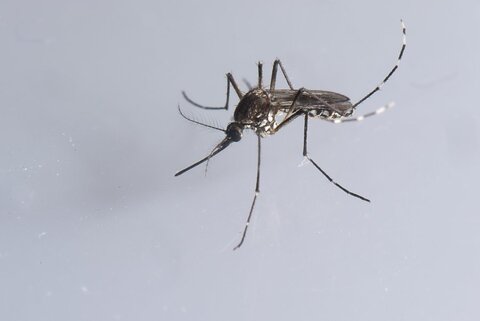New predictions for the global expansion of Dengue Fever until 2080

LSHTM's Dr Oliver Brady has co-authored a new paper which uses climate, urbanisation and socioeconomic data to map the global expansion of dengue fever until 2080.
African countries, particularly in the Sahel regional and southern part of the continent, face a substantial increase in risk of the dengue fever over the next 65 years, according to new research published in Nature Microbiology.
Globally, the study estimated that more than two billion additional people could be at risk for dengue in 2080 compared with 2015 under a warming scenario roughly representative of the world's current emissions trajectory. That increase largely comes from population growth in areas already at high risk for the disease, as well as the expansion of dengue's range.
The study, which involved analysis of climate change data, urbanisation, and socioeconomic change, also predicts increase risk in the Southeastern United States, coastal areas of China and Japan, and inland regions of Australia.
The study, led by the London School of Hygiene & Tropical Medicine (LSHTM), University of Oxford and the University of Washington, is the first to include the projected spread of mosquitoes that carry the dengue virus.
To estimate the future spread of the disease, researchers took data on mosquito behaviour and projections on urbanization (one type of Aedes mosquito that spreads the disease is especially prevalent in cities) and combined them with three different climate scenarios to model what might happen in 2020, 2050 and 2080. Under all three scenarios the spread of dengue increased, putting an estimated 60% of the global population at risk of contracting the virus in 2080.
The greatest shifts in dengue risk are projected to occur on the African continent, particularly in the Sahel and Southern Africa. In contrast to other studies, the results do not show significant expansion of dengue across continental Europe, with only a few isolated areas around the Mediterranean likely to see low levels of risk in the future.

Dr. Oliver Brady co-lead author from LSHTM, said: “What was most surprising was actually how much less spread we predict in comparison to previous dengue maps. While climate change is likely to contribute to dengue expansion, factors including population growth and increasing urbanisation in tropical areas will play a much larger role in shaping who will be at risk in the future.”
In addition to the US, China, Japan, and Australia, new areas at risk over the next 60 years include higher altitudes in central Mexico and northern Argentina. Areas with decreasing risk include areas in Central East Africa and India.
Dengue causes the greatest disease burden of any virus transmitted by mosquitoes, ticks or other insects, with an estimated 100 million infections per year, according to the World Health Organization. There are an estimated 10,000 deaths from dengue — also nicknamed breakbone fever — which is transmitted by Aedes mosquitoes that also spread Zika and chikungunya.
There is no specific treatment, but ensuring governments have robust programmes for mosquito control, clinical management of disease and outbreak response can help limit the impact of dengue.
Impact of climate change and disease risk
How much the world warms has a significant impact on the spread of the disease.
The research, Dr. Brady said, “hints at the idea that if we do control emissions better, we could stop or at least limit this kind of spread.”
Warming temperatures help expand dengue’s range because, in part, as it gets warmer mosquitoes can thrive in more places where they couldn’t previously. Warming temperatures also shorten the time it takes a mosquito to become a biting adult and accelerate the time between when a mosquito picks up a disease and is able to pass it on.
Aedes aegypti is particularly concerning, because, while other mosquito species will bite whatever is convenient, Aedes aegypti prefer to bite humans.
The authors acknowledge limitations of the study including that the analysis assumes no changes in our ability to control dengue in the future. With a variety of new vaccines and mosquito control tools on the horizon, we may be able to better contain expansion of dengue in the coming years.
This article is adapted from original articles by the New York Times and LSHTM
Further resources
- Publication: Messina JP, Brady OJ, et al. (2019) The current and future global distribution and population at risk of dengue. Nature Microbiology.
- Publication: Kumaran E, Doum D, et al. (2018) Dengue knowledge,attitudes and practices and their impact on community-based vector control in rural Cambodia. PLOS NTDs
- Publication: Recker M, Vannice K, et al (2016) Assessing dengue vaccination impact: Model challenges and future directions. Vaccine 34(38)
- Publication: Dorigatti I, Donnelly CA, et al (2018) Refined efficacy estimates of the Sanofi Pasteur dengue vaccine CYD-TDV using machine learning. Nature Communications
- Publication: Jit M. (2016) The economic burden of dengue: no longer invisible or unavoidable. Lancet Infectious Disease
- Find more dengue related publications by LCNTDR researchers